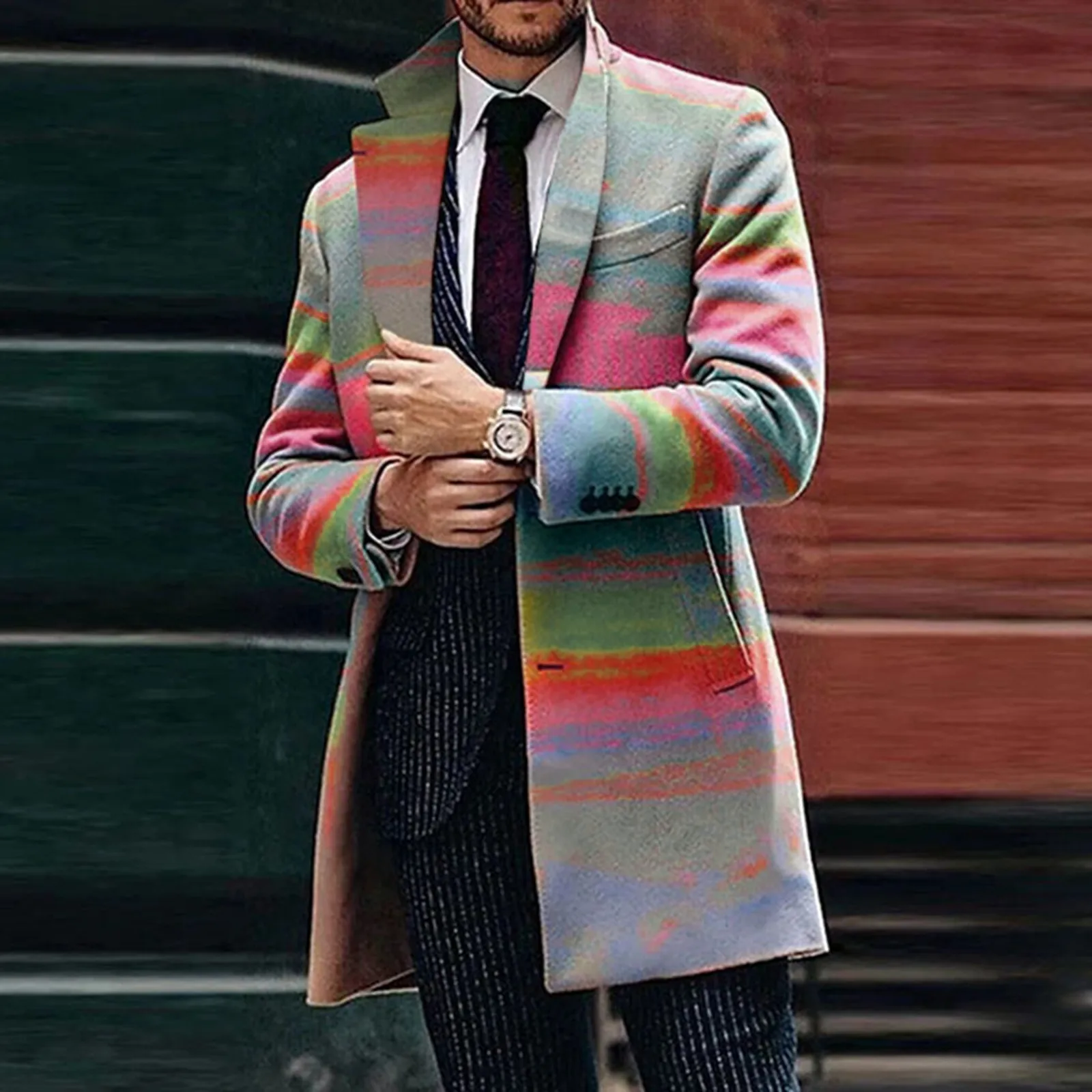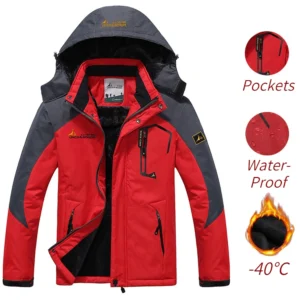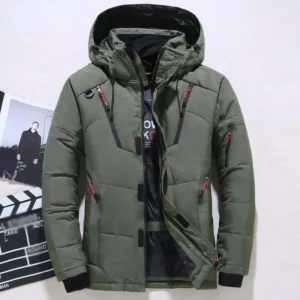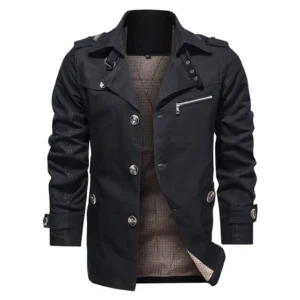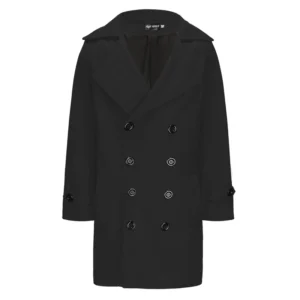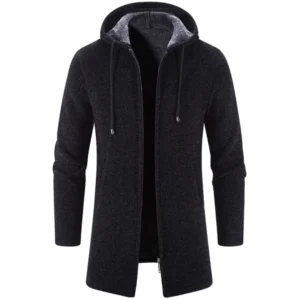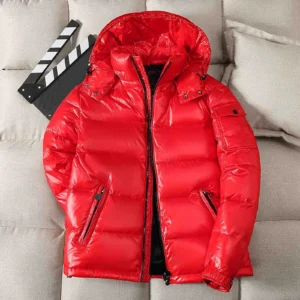Why Coat Lining Is Critical for Warmth and Comfort
When shopping for premium men’s outerwear, many focus solely on the exterior fabric while overlooking a crucial component: the lining. The lining is much more than just the inner fabric that touches your body—it’s a fundamental element that determines how warm and comfortable your coat will actually be.
A quality coat lining serves multiple essential functions:
- Creates a thermal barrier that traps your body heat
- Provides comfortable contact with your skin or clothing underneath
- Protects the outer shell fabric from wear and body oils
- Significantly extends the overall life of your garment
- Adds structure and drape to the coat’s silhouette
Understanding different coat linings is particularly important when selecting outerwear for varying weather conditions. The right lining can make the difference between staying comfortably warm during a freezing commute or shivering despite wearing a seemingly substantial coat.
The relationship between choosing the right coat length and selecting appropriate lining material is crucial for achieving both style and function. Premium outerwear brands prioritize lining selection, as it can increase a coat’s warmth by up to 30% compared to unlined garments of the same weight.
As we explore the science behind different lining materials, you’ll discover why investing in quality outerwear with thoughtfully selected linings makes such a significant difference in performance and comfort.
The Science of Warmth: How Different Linings Insulate
To understand what makes certain coat linings warmer than others, we need to grasp the basic principles of thermal insulation. At its core, insulation works by trapping air and slowing heat transfer away from your body.
The effectiveness of any insulating material depends on three primary factors:
Air Entrapment: Still air is an excellent insulator. Materials that can trap more air in small pockets generally provide better warmth with less weight.
Density and Loft: Higher loft (thickness) typically means more trapped air and better insulation, but the relationship isn’t always linear. Some dense materials can also provide excellent insulation through different mechanisms.
Moisture Management: When insulation gets wet, it often loses much of its insulating ability. Materials that resist moisture or maintain warmth even when damp perform better in real-world conditions.
Different lining materials create warmth through various mechanisms. Down and wool create tiny air pockets that trap heat, while some synthetic materials reflect body heat back toward you. Understanding these insulation types and their warmth capabilities helps explain why certain coats perform better in specific conditions.
The relationship between weight, thickness, and warmth isn’t always straightforward. Some of the warmest materials (like premium down) provide exceptional insulation with minimal weight and bulk, while others require more thickness to achieve similar warmth.
Natural Insulation Materials: Superior Warmth from Nature
Natural materials have been used for centuries to provide warmth, and for good reason. They offer exceptional thermal properties that modern science still works to replicate. The ongoing debate between down versus synthetic insulation warmth continues as each offers distinct advantages depending on your specific needs.
Down: The Ultimate Warmth-to-Weight Champion
Down insulation represents the gold standard for warmth-to-weight ratio in coat linings. This natural material consists of the soft, fluffy clusters from beneath the feathers of ducks and geese.
What makes down exceptional is its structure of thousands of tiny filaments that create loft and trap air. This natural design provides remarkable insulation with minimal weight.
Key characteristics of down insulation include:
- Fill Power Ratings: Measured from 400-900+, this number indicates how many cubic inches one ounce of down fills when allowed to reach maximum loft. Higher numbers mean better quality down that provides more warmth with less weight.
- Goose vs. Duck Down: Goose down typically achieves higher fill powers (650-900+) and better durability, while duck down (typically 550-650 fill power) offers good performance at a lower price point.
- Water Vulnerability: Down’s biggest weakness is its poor performance when wet. However, hydrophobic treatments have improved water resistance in modern down insulations.
For understanding how down contributes to overall coat warmth levels, it’s important to consider both the quality (fill power) and quantity (weight) of down used in a particular coat.
Premium coats often feature responsible down standard (RDS) certification, ensuring ethical sourcing practices. When properly cared for, down can maintain its insulating properties for decades, making it an excellent investment for high-quality outerwear.
Wool and Shearling: Classic Warmth with Natural Benefits
Wool has been keeping humans warm for thousands of years, and modern wool linings continue this tradition with several impressive properties:
- Natural crimp and fiber structure that traps air for excellent insulation
- Ability to absorb up to 30% of its weight in moisture while still retaining warmth
- Natural temperature regulation that works across a wide range of conditions
- Inherent odor resistance and antimicrobial properties
Shearling (sheepskin with the wool still attached) takes these properties even further. The combination of leather and wool creates an extraordinarily warm lining with excellent wind resistance and moisture management.
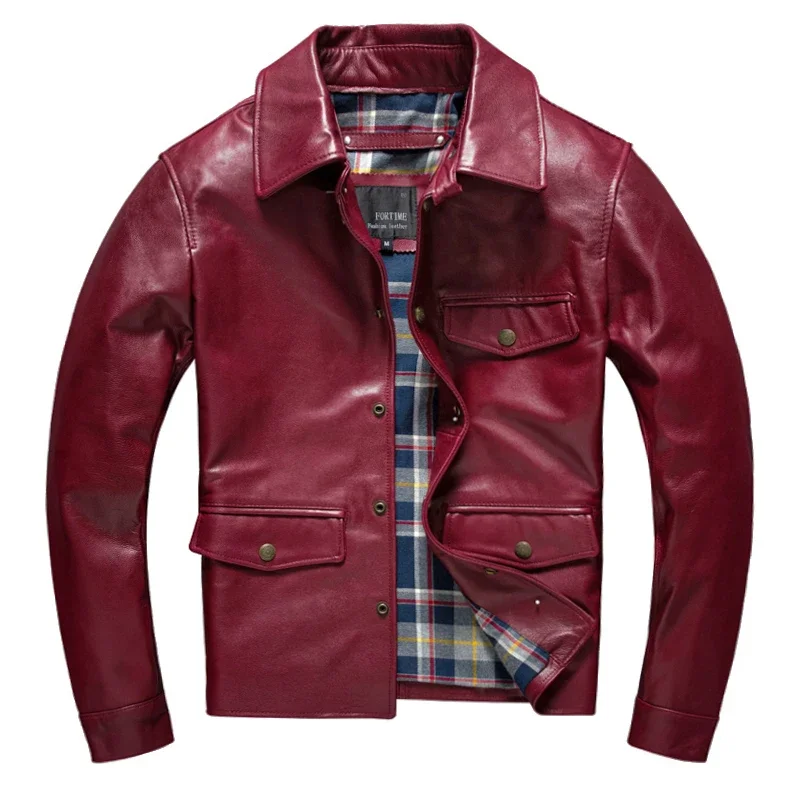
Different wool weights and processing methods produce varying results, from lightweight merino wool linings to thick, dense shearling. Understanding whether sheepskin and shearling are the same can help when evaluating premium coat options.
While not as light as down for equivalent warmth, wool and shearling offer better performance when damp and often greater durability, making them excellent choices for everyday wear in variable conditions.
Silk: Lightweight Luxury with Surprising Warmth
Silk might seem like an unlikely candidate for winter warmth, but this natural fiber offers unique thermal properties that make it an excellent premium lining option:
- Creates a remarkable barrier against heat loss despite its thin profile
- Naturally adapts to body temperature, keeping you warm in cold conditions and cool in warm ones
- Extremely lightweight and smooth against the skin
- Allows excellent freedom of movement without bulk
Traditionally used in cold weather garments across Asia for centuries, silk linings add both luxury and functional benefits to high-end overcoats and formal wear. The material excels as a comfort layer in dress coats and can be combined with other insulations for enhanced performance.
While silk may not provide enough insulation on its own for extreme cold, its exceptional feel and temperature-regulating properties make it a sought-after component in premium outerwear designed for moderate winter conditions.
Synthetic Insulation Materials: Modern Solutions for Warmth
While natural materials set the standard for insulation, modern synthetic alternatives offer impressive performance, often at lower cost and with better resistance to moisture. Today’s winter coat collections frequently feature these advanced materials that combine science with practical functionality.
Polyester-Based Insulations: Versatility and Performance
Polyester forms the foundation of most synthetic insulation options, appearing in multiple forms:
Standard Quilted Polyester Linings
– Moderate warmth at affordable prices
– Consistent performance that’s easy to care for
– Typically requires more weight for equivalent warmth compared to premium materials
Fleece Linings
– Available in different weights from lightweight microfleece to heavy pile
– Excellent soft feel against skin or other clothing
– Good insulation-to-weight ratio and maintains some warmth when damp
– Can pill or compress over time, reducing insulating ability
Sherpa/Pile (Synthetic Sheepskin)
– Mimics the look and feel of shearling at a lower price point
– Provides excellent warmth but may not last as long as natural alternatives
– Lower maintenance requirements than natural shearling
Technical Synthetic Insulations (Thinsulate, PrimaLoft, etc.)
– Engineered specifically for maximum warmth with minimum weight
– Superior performance when wet compared to down
– Advanced varieties approach the warmth-to-weight ratio of natural down
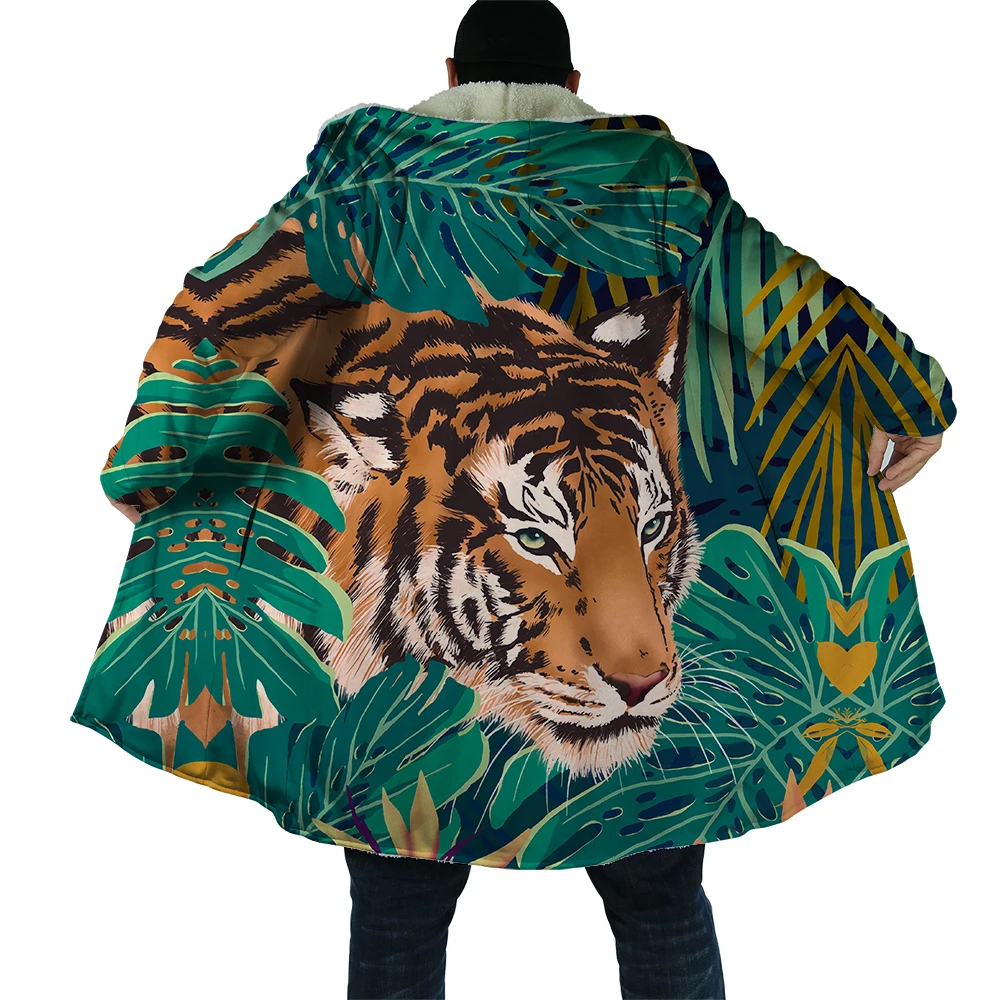
Many insulated coat styles utilize these synthetic options either alone or in combination with natural materials. The versatility of polyester-based insulations makes them suitable for everything from lightweight transitional jackets to serious winter parkas.
Mens Heavy Winter Coat, Mens Insulated Coat, Mens Parka Coat
Price range: $175.52 through $237.36 Select options This product has multiple variants. The options may be chosen on the product pageMens Big and Tall Winter Coats, Mens Down Coat, Mens Hooded Winter Coat, Mens Puffer Coat
Price range: $126.44 through $217.01 Select options This product has multiple variants. The options may be chosen on the product pageMens Big and Tall Winter Coats, Mens Hooded Winter Coat
Price range: $80.32 through $106.68 Select options This product has multiple variants. The options may be chosen on the product pageMens Double Breasted Pea Coat, Mens Wool Blend Coat, Mens Wool Pea Coat
Price range: $136.84 through $157.36 Select options This product has multiple variants. The options may be chosen on the product pageMens Cashmere Overcoat, Mens Hooded Winter Coat, Mens Wool Blend Coat
Price range: $128.72 through $139.68 Select options This product has multiple variants. The options may be chosen on the product pageMens Hooded Winter Coat, Mens Insulated Coat, Mens Puffer Coat, Mens Quilted Coat
Price range: $139.88 through $177.72 Select options This product has multiple variants. The options may be chosen on the product page
Specialized Synthetic Linings: Technical Performance
Beyond basic polyester insulations, advanced synthetic materials push the boundaries of thermal performance:
- Multi-layer Technical Systems: Combine different synthetic materials in layers to manage both heat retention and moisture transfer
- Reflective Technologies: Aluminum-coated linings that reflect body heat back toward the wearer while adding minimal weight
- Aerogel-Infused Fabrics: Incorporate space-age insulation technology that offers exceptional warmth with ultra-thin profiles
Recent innovations have also improved the sustainability of synthetic insulations. Many premium brands now offer recycled polyester insulations that perform as well as virgin materials while reducing environmental impact.
These specialized synthetic options excel in specific challenging conditions, such as wet environments or situations requiring compressible warmth. They represent the high-tech alternative to premium natural materials, offering distinct advantages for certain activities and climates.
Rayon and Acetate: Functional Comfort Linings
Semi-synthetic materials like rayon and acetate occupy a middle ground between natural and fully synthetic linings:
- Smooth, silky feel that’s often used as an alternative to silk
- Moderate warmth properties that work well in lightweight coats
- Better breathability than many pure synthetic options
- Common in dress coats and formal outerwear
While not primary insulators themselves, these materials create comfortable inner layers that can complement other insulation types. They’re particularly valued in coats where a smooth glide over other clothing is important, such as formal overcoats and certain business wear.
These linings provide a practical balance of comfort, moderate warmth, and ease of movement, making them popular choices for daily-wear coats in mild to moderate winter conditions.
Hybrid and Blended Linings: Combining the Best Properties
Modern coat manufacturers increasingly use hybrid approaches, combining different materials to overcome the limitations of any single insulation type. These strategic combinations create linings that perform better across a wider range of conditions.
Common hybrid approaches include:
- Down + Synthetic Blends: Combine down’s exceptional warmth with synthetic materials’ moisture resistance
- Wool-Synthetic Blends: Mix natural wool fibers with synthetics for better durability and easier care
- Multi-Layer Systems: Stack different materials to create zones of varying insulation and breathability
The wool blend coat category showcases how these hybrid constructions work in practice. By combining materials thoughtfully, manufacturers can create coats that maintain warmth in variable conditions while addressing the shortcomings of individual materials.
For example, placing synthetic insulation in areas prone to moisture (shoulders, cuffs) while using down in the body maximizes the performance of both materials. Similarly, wool-synthetic blends can offer wool’s temperature regulation with improved durability and reduced care requirements.
These hybrid approaches represent the evolution of coat lining technology, providing specialized solutions for specific wearing conditions rather than one-size-fits-all approaches.
Comparative Analysis: Which Lining Materials Provide the Most Warmth?
When comparing lining materials purely for warmth, several factors must be considered beyond just thermal performance. The following table provides a comprehensive comparison:
| Material | Warmth-to-Weight | Wet Performance | Durability | Breathability | Price Range | Sustainability |
|---|---|---|---|---|---|---|
| Premium Down (800+ fill) | Exceptional | Poor (unless treated) | Good with proper care | Excellent | High | Moderate (RDS certified) |
| Regular Down (600-700 fill) | Very Good | Poor (unless treated) | Good with proper care | Very Good | Moderate-High | Moderate (RDS certified) |
| Wool | Good | Very Good | Excellent | Very Good | Moderate | High |
| Shearling | Excellent | Good | Excellent | Good | Very High | Moderate |
| Silk | Moderate | Poor | Moderate | Excellent | High | High |
| Technical Synthetics | Very Good | Excellent | Good | Good | Moderate | Low-Moderate (improving) |
| Fleece | Good | Good | Moderate | Moderate | Low-Moderate | Low (improving) |
| Standard Polyester | Moderate | Good | Moderate | Poor-Moderate | Low | Low |
| Rayon/Acetate | Low-Moderate | Poor | Moderate | Good | Low-Moderate | Low |
| Hybrid Systems | Very Good-Excellent | Good-Excellent | Good | Good-Excellent | Moderate-High | Varies |
For extreme cold environments (below 0°F/-18°C), premium down and shearling typically provide superior performance, with advanced synthetic insulations following closely. The excellent insulation found in shearling coat construction explains their enduring popularity for serious winter wear.
For active wear in cold conditions, breathable insulators like wool and technical synthetics often perform better than down, as they manage moisture from perspiration more effectively.
For moderate cold (30-50°F/-1 to 10°C), many options perform adequately, making other factors like weight, care requirements, and cost more important in the decision process.
Choosing the Right Lining for Your Climate and Activities
Selecting the optimal coat lining depends on your specific circumstances:
For Cold, Dry Climates (Interior Continental/Mountain Regions):
– Premium down offers unbeatable warmth-to-weight ratio
– Wool provides excellent insulation with good durability
– Shearling delivers maximum warmth for extreme conditions
For Cold, Wet Climates (Coastal/Great Lakes Regions):
– Technical synthetic insulations maintain warmth when damp
– Treated hydrophobic down if premium performance is needed
– Wool-synthetic blends balance natural warmth with moisture resistance
For Active Use (Commuting, Walking, Light Activity):
– Breathable insulators that manage moisture (wool, technical synthetics)
– Layered systems that can adapt to changing activity levels
– Insulations that maintain performance with repeated compression
For Primarily Sedentary Use (Driving, Standing):
– Maximum warmth materials like down or shearling
– Dense insulation that blocks wind effectively
– Longer coat lengths that cover more of the body
Understanding your ideal coat length requirements works hand-in-hand with lining selection. A shorter coat with exceptional insulation might provide similar warmth to a longer coat with moderate insulation, depending on design and construction quality.
Consider how your coat will layer with other garments. Smoother linings like silk or acetate allow easier movement over suits or layers, while plush linings like fleece or shearling work better with thinner underlayers.
Caring for Your Coat Lining: Maintaining Warmth and Extending Life
Proper maintenance ensures your coat lining maintains its insulating properties season after season:
Down Care:
– Follow manufacturer’s cleaning instructions precisely
– Use specialized down wash products when cleaning
– Ensure complete drying with tennis balls in the dryer to restore loft
– Store uncompressed in a breathable garment bag
Wool and Shearling:
– Air out regularly rather than frequent cleaning
– Use specialized wool detergents when washing is necessary
– Never tumble dry on high heat
– Store with cedar blocks to deter moths
Synthetic Insulations:
– Generally easier to clean than natural materials
– Avoid fabric softeners which can coat fibers and reduce insulation
– Allow complete drying before storing
– Restore loft by tumbling with clean tennis balls on no/low heat
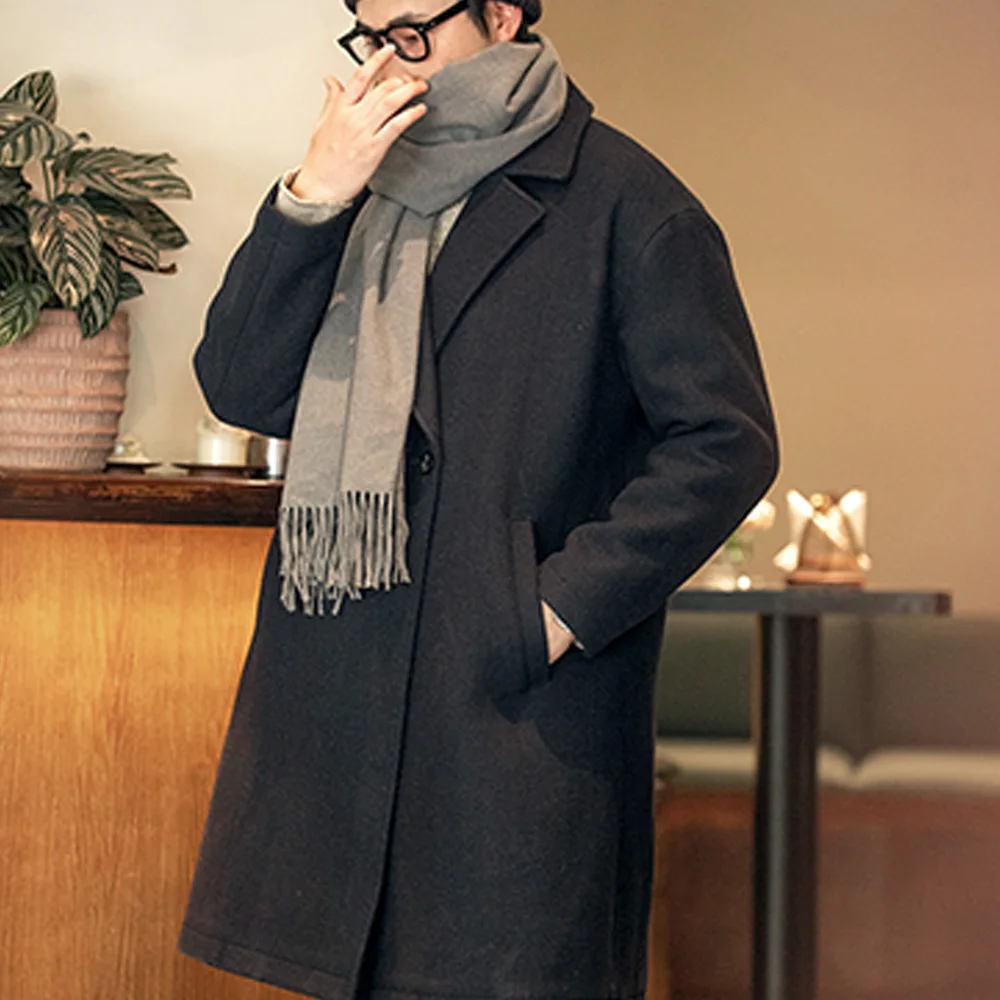
Regular maintenance helps preserve your coat’s warmth capabilities. Following the perfect winter coat length guide will help you select a style that both flatters your frame and provides appropriate coverage, while proper care ensures its long-term performance.
Watch for warning signs of lining deterioration: clumping insulation, cold spots, or excessive compression that doesn’t recover. Address these issues promptly to maintain your coat’s insulating properties.
Beyond the Lining: Other Coat Construction Features That Affect Warmth
While the lining is crucial for insulation, several other construction elements contribute significantly to a coat’s overall warmth:
Seam Construction:
– Sewn-through seams are lighter but can create cold spots
– Box-baffle construction maximizes loft and eliminates cold spots
– Sealed or taped seams prevent wind penetration
Wind-Blocking Features:
– Storm flaps over zippers and buttons
– Adjustable drawcords at hem and hood
– Knitted or adjustable cuffs to seal wrists
Collar and Neck Design:
– High collars protect the vulnerable neck area
– Collar shapes that can be fully closed against wind
– Chin guards for comfort when fully zipped
Overall Cut and Design:
– Proper overlap at closures prevents cold air infiltration
– Articulated sleeves maintain coverage during movement
– Strategic insulation placement for core warmth
The best heavy winter coats combine premium insulation with thoughtful construction details that work together as a complete system. Even the finest down or shearling lining can’t perform optimally if cold air can infiltrate through poor seams or inadequate closures.
When evaluating a potential coat purchase, examine these construction elements alongside the lining material. Quality outerwear addresses all aspects of cold-weather protection, creating garments that perform reliably in demanding conditions.
By understanding both lining materials and construction features, you can select outerwear that delivers exceptional warmth, comfort, and value—regardless of what winter brings your way.

